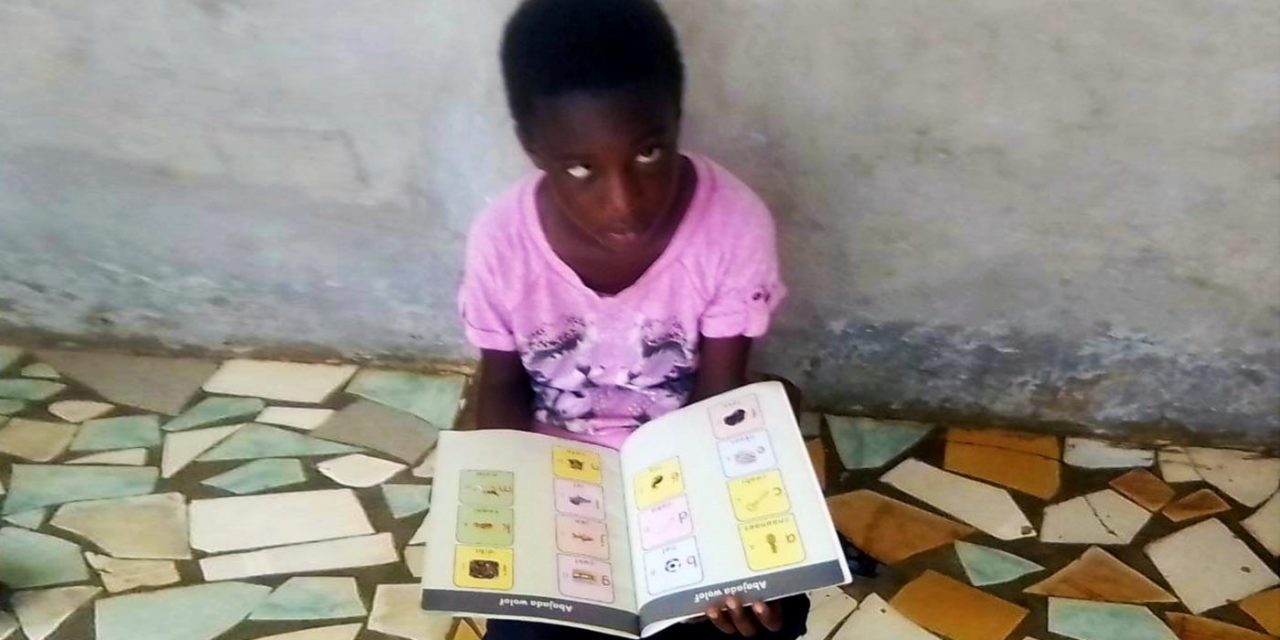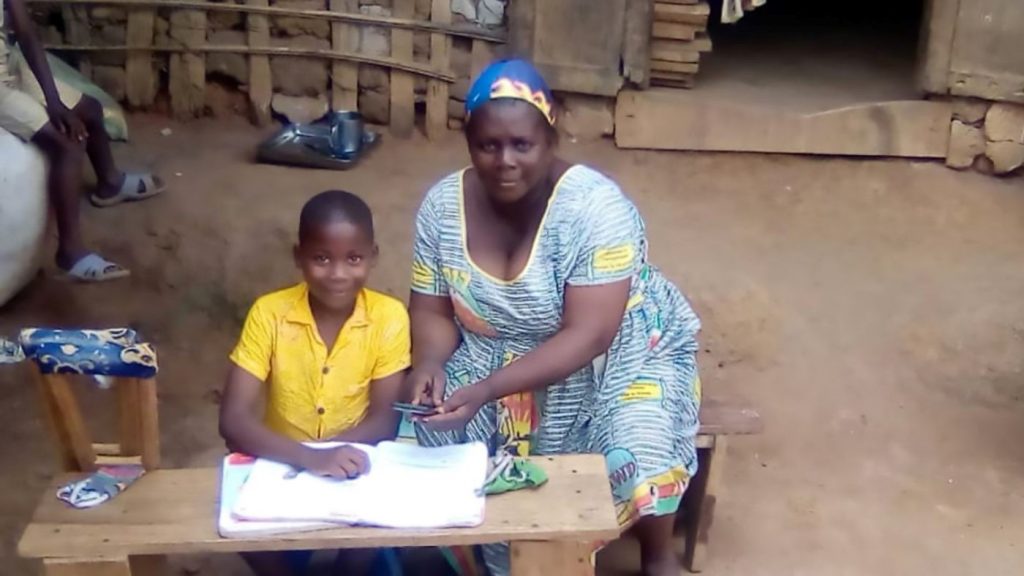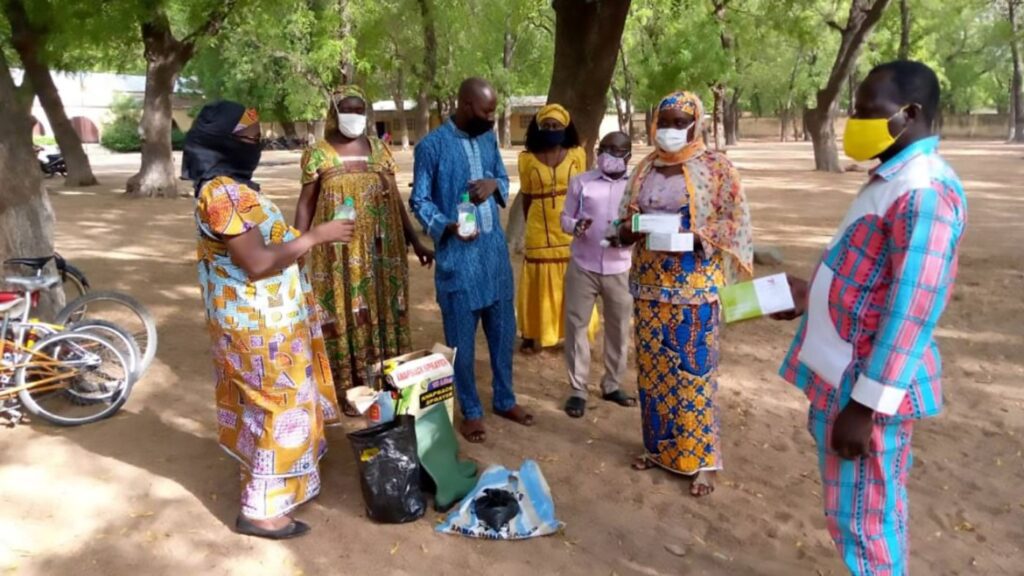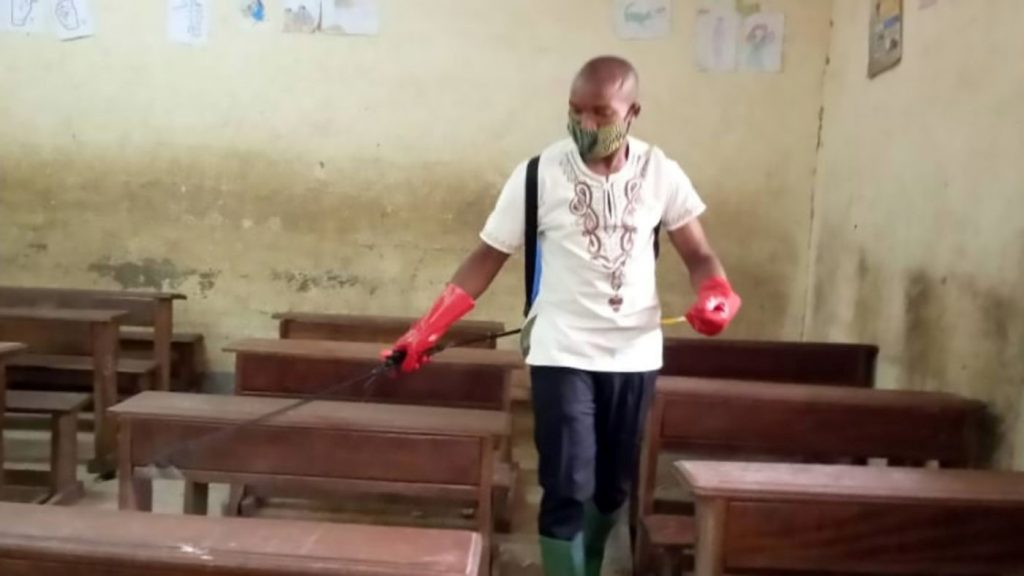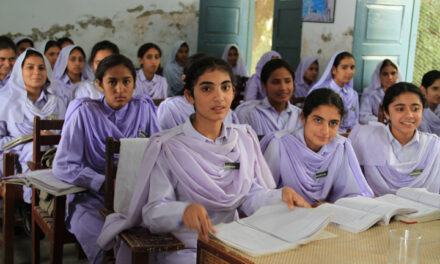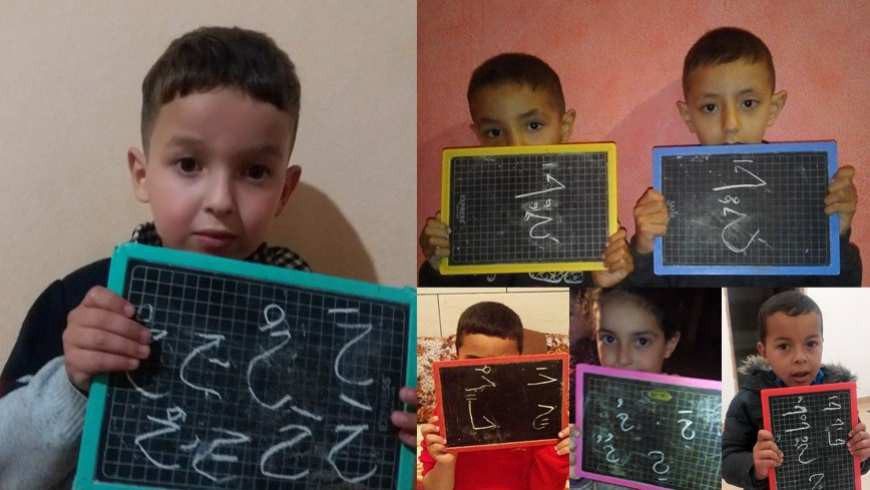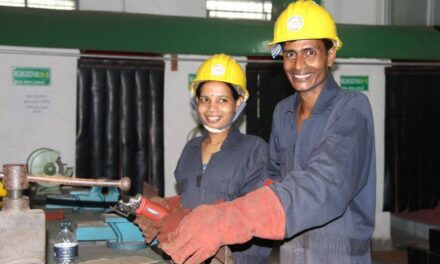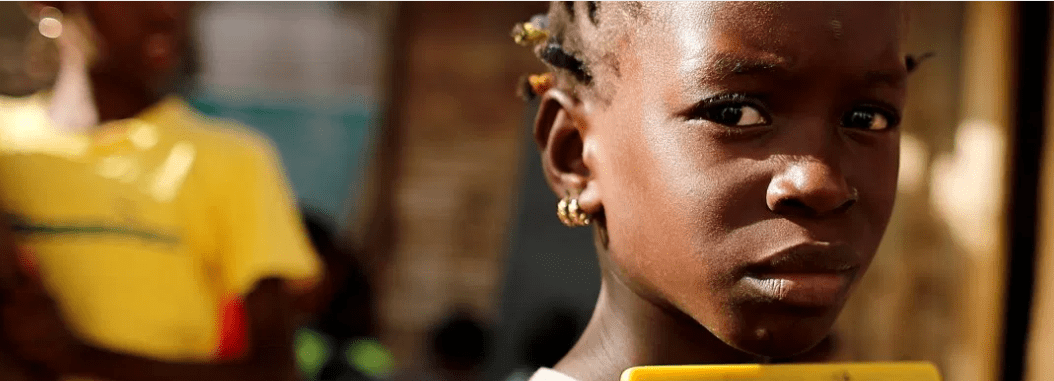This article was published on the Sightsavers website in July 2020.
“The COVID-19 pandemic has led to closure of schools and disrupted learning in more than 190 countries. 70 per cent of the world’s student population are currently out of school,” explains Guy Le Fanu, Sightsavers’ senior global technical lead for education.
“In many countries, particularly in Africa and Asia where Sightsavers works, this situation presents one of the toughest choices for education policymakers as they navigate the challenges of protecting children and their education, while containing the spread of the virus.”

Jitendra Kumar, Senior programme officer India |
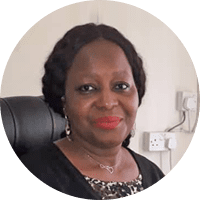
Tiangay Gondoe, Programme manager Sierra Leone |
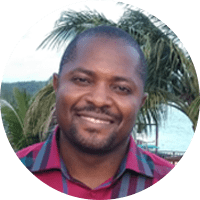
Ezekiel Benuh, Programme officer Cameroon |
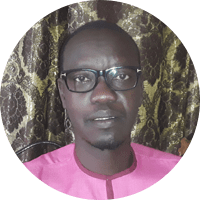
Abdoul Aziz Fall, Programme officer Senegal |
- Supporting children’s learning from a distance
Jitendra Kumar, senior programme officer in India: “Just before lockdown came into force here, we provided assistive devices such as laptops, mobile phones or tablets and we’re training for children with visual impairments on how to use them over the phone. For the children who don’t have these devices, we encouraged parents and siblings to them to lend their mobile phone for a few hours, so that they can take part in classes.”
Abdoul Aziz Fall, programme officer in Senegal: “It is very important to support children with disabilities through the COVID-19 crisis. I say it is our bound and duty to support them. We have been providing home-based learning for children with disabilities over WhatsApp, because the government classes on TV and radio aren’t accessible.”
“Teachers send braille papers out for lessons such as maths, history, geography, sciences and French, and parents help their children to work through them. They take a photo of the completed paper using their phone and send it back to the teacher for feedback.
“Parents understand that their children are often left behind because we are a developing country. They say to me: ‘We know you give our children a chance to succeed at school just like their peers’.”
Tiangay Gondoe, programme manager in Sierra Leone: “Shutting schools to manage disease outbreaks is not new to us – in 2014-15, schools shut for nearly nine months due to the Ebola epidemic. We’re distributing radios and batteries to children with disabilities to enable them to take part in the government’s emergency radio teaching programmes.”
Ezekiel Benuh, programme officer in Cameroon: “It is uncertain when COVID-19 will end. If no targeted measures are taken, children with disabilities and other learning needs are most likely to be left behind. In order to avoid loss of knowledge and skills already acquired by the children, we’re supporting the ministry of basic education to adapt current distance learning packages or design new possibilities, to make them accessible for children with disabilities. For example, providing the technology and skills to inclusion champions so they can continue to teach children via WhatsApp and Zoom sessions.”
His mother Antoinette says: “These WhatsApp lessons enable me to support him to catch up.” Read Zambo’s story.
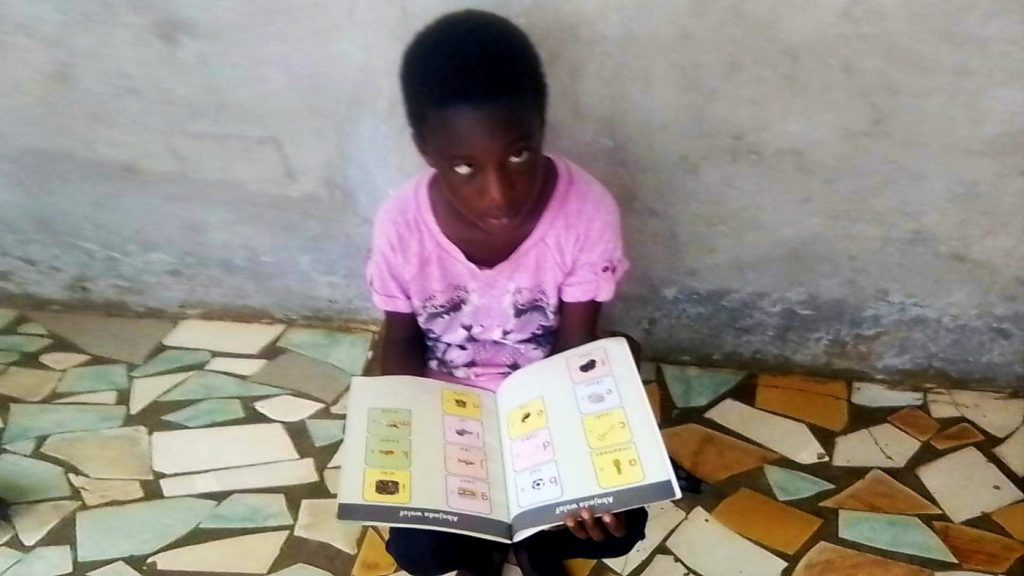
Thanks to distance learning, Seynabou spends much of her time reading at home in Senegal and doing the homework she received via WhatsApp.
- Getting parents involved as educators
Ezekiel: “We have witnessed an increase in parental involvement in the education of their children during COVID-19. Firstly, because teachers were no longer providing direct support, parents’ role became more vital than ever before in ensuring the effectiveness of distance learning, and secondly because children are at home with minimal social contact with others.”
“We’re providing mobiles to parents and training them how to use them to receive lessons through WhatsApp from our ‘inclusion champions’: teachers who have had training on disability inclusion.”
Abdoul: “We are distributing parental guides on how to support their children’s reading and writing and providing lesson support by phone. We are also looking at giving advice to parents on their children’s particular disability, and providing advice on learning activities they can do at home.”
Tiangay: “We’re supporting inclusion champions to coach parents in their local languages on how to support their children’s education through the radio, and maintain social distancing as required.”
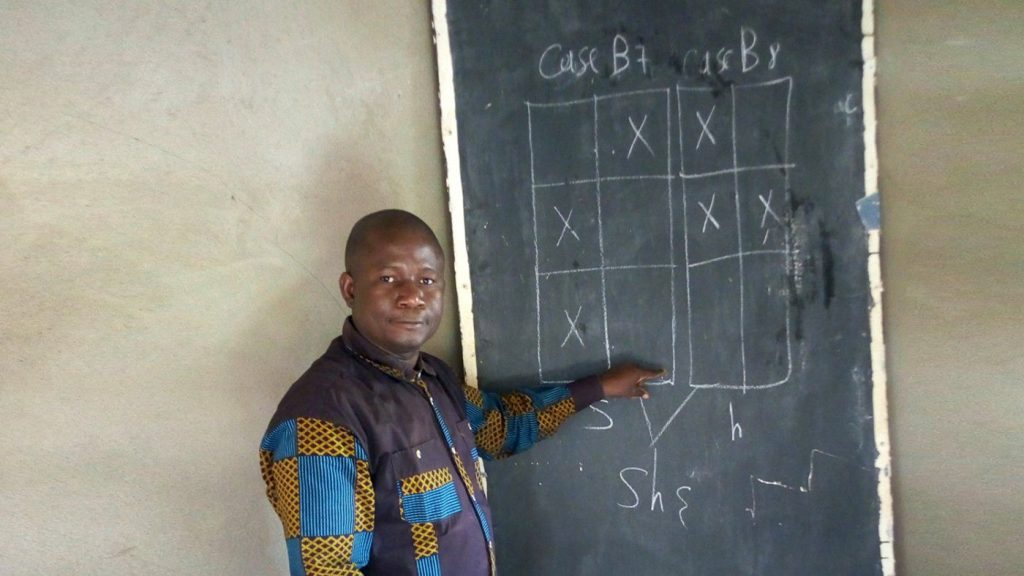
In Mali, we’re working with linguistic expert Dr Issiaka Ballo, to adapt braille to the local Bamanankan language, identifying missing letters, to ensure it can be used by teachers and students.
- Providing hygiene kits and personal protective equipment (PPE)
Jitendra: “Project staff at partner hospitals funded by Sightsavers are making and distributing masks, sanitiser and soap to vulnerable communities including people with disabilities.”
Abdoul: “Because some families have a low income, hand sanitiser is totally unaffordable for them, even though it may be cheap for other people. We are distributing hand sanitiser as well as soap and gloves for the families of children with disabilities in the five pilot schools who would otherwise not have access to this.”
Ezekiel: “Along with basic hygiene kits for families of children with disabilities, we’re taking into consideration the specific hygiene needs of girls with disabilities. We’re also funding the cleaning of schools before children go back to sit their end of course certificate exams.”
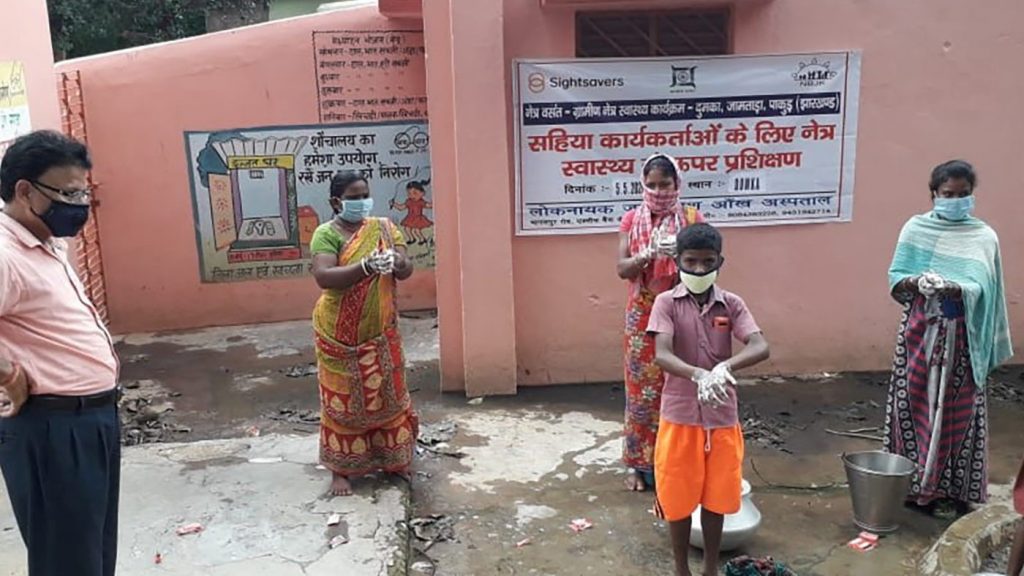
Community health volunteers in Jharkhand, India, raise awareness of how to prevent the spread of COVID-19.
- Helping teachers to adapt to teaching at a distance
Ezekiel: “Distance learning is a new practice for us in Cameroon. We have given teachers basic training on how to teach via phone call, TV, WhatsApp and other distance learning mediums. We’ve also started a WhatsApp group for the inclusion champions, so they have their own supportive community to learn from each other’s discoveries and innovations.”
Jitendra: “We’re training teachers how to carry out inclusive lessons through assistive devices, through an online digital platform.”
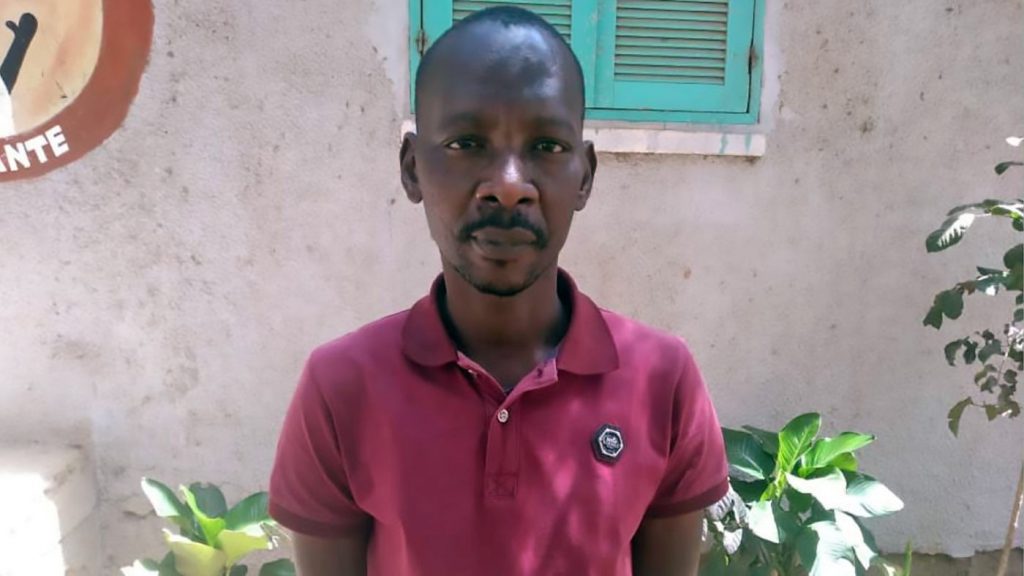
Magatte Gadje is a primary school teacher at an inclusive school in Senegal. He says: “The children with disabilities and their parents are very enthusiastic of this initiative. We all appreciate it.”
- Working with local groups and government to build connections and increase the support
Guy Le Fanu, Sightsavers UK: “It is imperative that grassroots organisations which know most about their communities are involved in this process. From raising awareness to knowing the logistics of local contexts, and drawing on their own lived experience, disabled people’s organisations and community groups are the best placed to help design and run inclusive education programmes.”
Jitendra: “We’ve put forward our successful model of inclusive distance learning to the government of Jharkhand and they’re now adopting it in all districts in the state until the school reopens. In another state, Bihar, the provision of our tele-education initiative has been increased and is now available across all 38 districts of Bihar. This is a classic example of programme scale-up as a partner to the government, promoting inclusive education programmes.”
Abdoul: “We are supporting parents’ associations to influence the District Child Safeguarding Committee to ensure that the needs of children with disabilities are taken into account in action plans. And we’re also supporting the National Service for Education and Health Information to produce communication materials in sign language, Braille, audio and local language.”
“It is very important to support children with disabilities through the COVID-19 crisis. I say it is our bound and duty to support them.”

